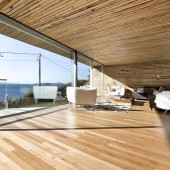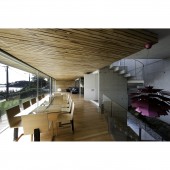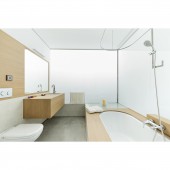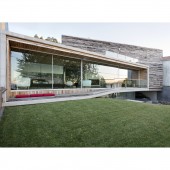Dezanove House by Inaki Leite |
Home > Winners > #55171 |
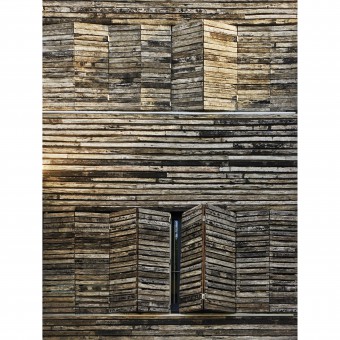 |
|
||||
| DESIGN DETAILS | |||||
| DESIGN NAME: Dezanove PRIMARY FUNCTION: House INSPIRATION: The house tries to borrow the tradition of the surroundings and reveal them through the story told in the design and the detailing. All shape, technology and materials are inspired in this fishing industry. The house resembles the old booths on top of these mussel platforms, and similarly to them, some parts of the house appear to float. The very intention of using this material, shape and technology was to integrate the architecture of the building with the culture and tradition of the area. UNIQUE PROPERTIES / PROJECT DESCRIPTION: The inspiration of the architect came from the reclaimed eucalyptus wood of the bateas. These are the mussel production platforms that you see in the estuary and that constitute one of the most important local industry in Ria da Arousa, Spain. Eucalyptus wood is used in these platforms, and there are great extensions of this tree in the region. The age of the wood is not hidden, and the different outer and inner faces of the wood are used to create different sensations. OPERATION / FLOW / INTERACTION: Cultural integration on the surrounding PROJECT DURATION AND LOCATION: As the house is in the waterfront, the application took from 2010 to 2012 and the site was finish in 14 months. FITS BEST INTO CATEGORY: Architecture, Building and Structure Design |
PRODUCTION / REALIZATION TECHNOLOGY: Reclaimed wood from the local fishing industry SPECIFICATIONS / TECHNICAL PROPERTIES: For the whole project we used 625 beams of reclaimed eucalyptus wood TAGS: Dezanove House, inaki leite, your architect london, reclaimed wood RESEARCH ABSTRACT: A collaboration of research with the local craftsman of the fishing industry in the region made possible the new use of the reclaimed wood into a residential build. After few iterations regarding additional treatments and final composition as well as the detailing of the hardware for the movable parts, the final solution came after about 16 months (including collection) CHALLENGE: Integrate the industrial design for fishing into a dwelling ADDED DATE: 2017-02-26 11:52:40 TEAM MEMBERS (1) : inaki leite, architect IMAGE CREDITS: #1: Photographer Hector Santos, 2015 #2: Photographer Juan Rodriguez, 2014 #3: Photographer Juan Rodriguez, 2014 #4: Photographer Adrián Vázquez, 2015 #5: Photographer Adrián Vázquez, 2015 |
||||
| Visit the following page to learn more: https://yourarchitect.london | |||||
| AWARD DETAILS | |
 |
Dezanove House by Inaki Leite is Winner in Architecture, Building and Structure Design Category, 2016 - 2017.· Read the interview with designer Inaki Leite for design Dezanove here.· Press Members: Login or Register to request an exclusive interview with Inaki Leite. · Click here to register inorder to view the profile and other works by Inaki Leite. |
| SOCIAL |
| + Add to Likes / Favorites | Send to My Email | Comment | Testimonials | View Press-Release | Press Kit | Translations |
Did you like Inaki Leite's Architecture Design?
You will most likely enjoy other award winning architecture design as well.
Click here to view more Award Winning Architecture Design.


